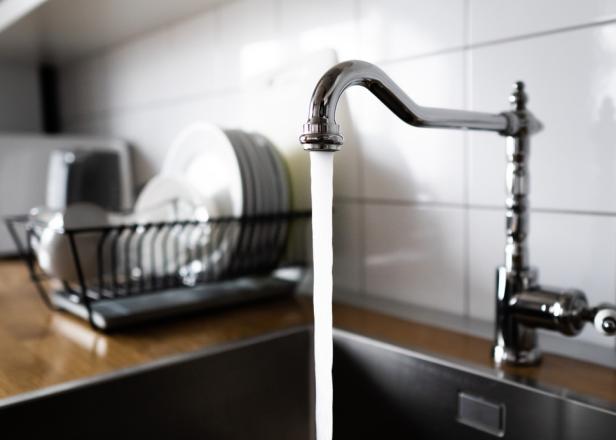Do you have low water pressure in your kitchen faucet? If so, you’re not alone.
Low water pressure is among the most common residential plumbing problems that homeowners face today. Fortunately, it can usually be fixed with a few simple steps.
In this article, we’ll discuss some of the common reasons why your kitchen faucet may have low water pressure and what you can do to fix the problem. From clogged pipes to corroded valves and aerators, understanding the cause of the issue will help you find an effective solution for restoring full flow from your kitchen tap!
Visit this website if you’d like to reach out to a professional plumber that can help you address your water pressure issues.
Table of Contents
Reason #1 — Clogged Pipes in Your Home
Low water pressure in your kitchen faucet may be caused by clogged pipes, either due to a buildup of sediment or other debris such as food particles and grease. To determine if this is the culprit, check all accessible pipes for blockages that could be causing the low flow rate.
Reason #2 — Corroded Valves
Another common cause of reduced water pressure in the kitchen tap is corrosion on valves. Over time, minerals and rust can build up inside the valve casing which restricts water flow through it, resulting in lower-than-normal downstream pressures at the faucet head itself.
Reason #3 — Aging Pipes in Your Home
Age-related issues with plumbing fixtures can also contribute to low pressure in your kitchen tap’s output stream – especially when you have older galvanized steel piping throughout your home’s interior. Loose fittings and deteriorating sealants may prevent an adequate amount of pressurized liquid from reaching its destination within an acceptable time frame!
Reason #4 — Poorly Installed Fixtures
If you’ve recently installed new fixtures or replaced existing ones there could be improper installation techniques that are preventing optimal performance from being achieved with them – leading to decreased flow rates out of those devices.
Reason #5 — Clogged Aerator
Finally, clogged or otherwise, restricted aerators can be a leading cause of low water pressure in the kitchen tap. Over time, sediment and other debris may become lodged inside these devices which causes them to restrict flow rates! Cleaning or replacing your aerator regularly is important for avoiding this issue altogether.
By understanding and addressing the source of the problem, you will be able to restore full water pressure to your kitchen faucet in no time at all! From clogged pipes to corroded valves and improperly installed fixtures, there are plenty of issues that could be causing reduced output from your taps – but with a little bit of knowledge, you can find and fix any issues quickly and easily.
What Should You Do If Your Kitchen Faucet’s Water Pressure is Lower Than Normal?
If you’re dealing with low kitchen faucet water pressure, you should try to figure out what might be causing it. It could be because of clogged pipes, corroded valves, old pipes, or a clogged aerator.
That being said, if you can’t figure out the problem yourself, the best thing that you can do is call a plumbing company to help fix it. They’ll be able to diagnose the issue and provide you with an effective solution for restoring full water pressure.
Ultimately, understanding and addressing the source of the problem is key to restoring normal water pressure in your kitchen faucet.
How Much Does It Cost To Fix a Faucet With Low Water Pressure?
The cost of fixing a faucet with low water pressure can vary significantly, depending on the root cause of the issue and the type of repairs that need to be done. In general, replacing parts such as valves or aerators can range from $25 to $500 each. If you have to replace an entire fixture or pipe, the costs could be much higher.
Other factors that can influence the cost include labor rates in your area and any additional materials needed for the repair. It’s important to note that if you notice low water pressure in your kitchen tap, it’s best to address it sooner rather than later to avoid further damage and more costly repairs down the line.
5 Reasons Why You Have Low Water Pressure in Your Kitchen Faucet — Conclusion
Low water pressure can be caused by numerous issues, from corrosion on valves to clogged aerators.
It’s important to diagnose the source of the problem and address it as soon as possible so that you don’t end up with more costly repairs down the line. If you’re unsure how to fix an issue yourself, calling a plumbing company is often recommended since they’ll have experience diagnosing and fixing these types of problems quickly and effectively.
With proper diagnosis and repair, you should be able to restore full water pressure in no time at all!
















